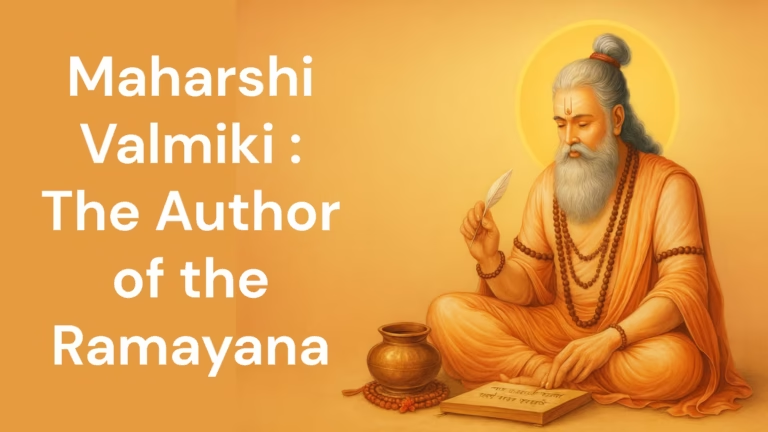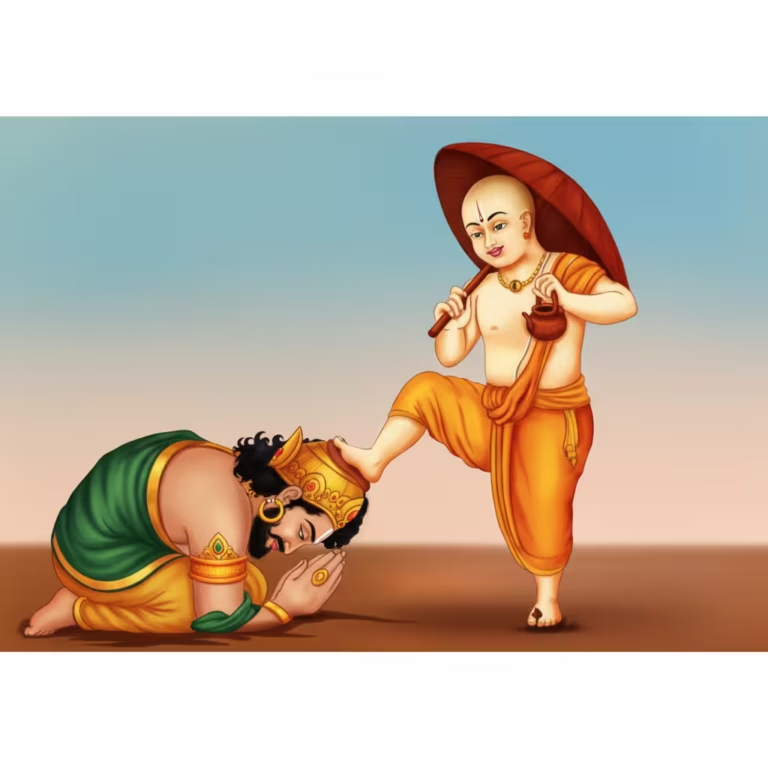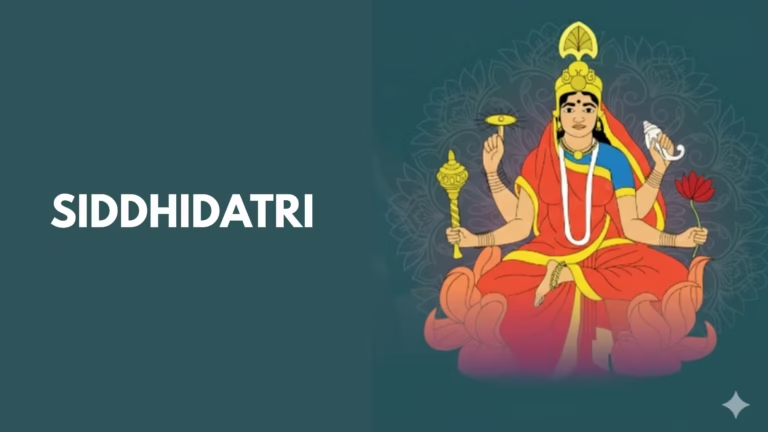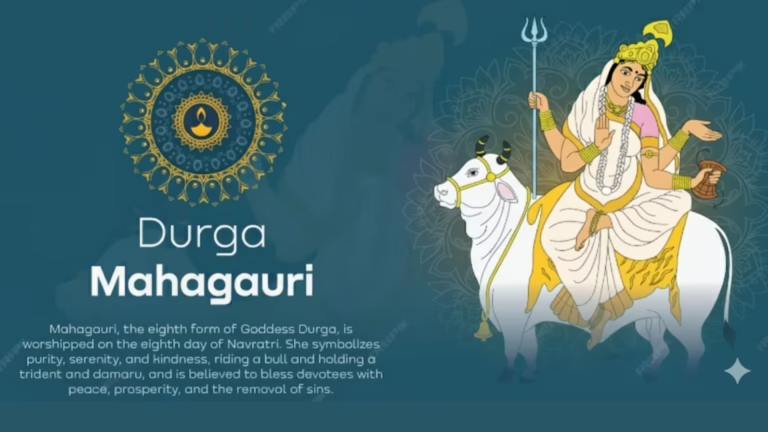Brahmacharya, Austerity, and the Devi Principle
In the Puranic tradition the Goddess (Devi) manifests in countless names and forms. One of these is Maa Brahmacharini—the Goddess who lives by brahmacharya (sacred discipline), is immersed in tapas (austerity), and remains unwavering in dharma‑resolve. This appellation, in essence, identifies the ascetic aspect of Haimavati/Parvati—daughter of Himavan (the lord of mountains) and Mena—in which she undertakes long and exacting austerities to obtain Shiva as her consort.
Scope Note: Puranic Sources Only
This presentation is strictly Puranic in scope. Its narrative, ideas, and doctrine are arranged with reference to the Shiva Purana, Devi‑Bhagavata Purana, Skanda Purana, and the Markandeya Purana (Devi‑Mahatmya). Contemporary customs, colour‑codes, or later popular practices are not included, so that readers may engage the scriptural core without admixture.
Name & Etymology: The Scriptural Sense of “Brahmacharini”
In Sanskrit, brahmacharya signifies a life oriented to Veda/Brahman, marked by self‑restraint, vow‑keeping, and austerity. Brahmacharini—“she who practises brahmacharya”—thus denotes the Devi’s aspect in which she embraces intense restraint, sacred vows, and rigorous tapas.
In the Puranic accounts, this aspect is intimately connected to Parvati’s long austerities; hence in Shakta expositions of the Navadurga, the name is invoked with particular reverence. At the same time, the Puranas predominantly employ honorifics such as Uma, Gauri, Girija, Haimavati, Aparna, etc. The sense of “Brahmacharini” is derived from these very episodes, because Parvati’s ascetic character is a foundational element of her life‑charit.
Background: From Sati’s Tale to Parvati’s Descent (Shiva Purana)
The antecedent of the Devi‑principle is the charit of Sati. Sati, daughter of Daksha, was wed to Shiva; but owing to the insult offered to Shiva at Daksha’s sacrifice, Sati relinquished her body. The Shiva Purana (Rudra‑Samhita, esp. the Sati‑kanda) recounts the episode. For the balance of the cosmic order, the Devi descends again—this time in the lineage of Himavan as Parvati (Haimavati/Girija).
From this point begins the Brahmacharini mode of self‑discipline and austere seeking, which ultimately culminates in the marriage of Shiva and Parvati.
The House of Himavan and Parvati’s Early Disposition (Devi‑Bhagavata, Skanda Purana)
The Puranas extol Himavan (the Himalaya) as the king of mountains; his queen Mena (Maina) is depicted with deep maternal tenderness. Born into this pure and dharmic milieu, Parvati is described as being inclined from childhood towards Shiva‑tattva and devotion to the gods. The Devi‑Bhagavata Purana and Skanda Purana—in their accounts of the sanctity of the Himalayas and the virtues of Himavan’s house—affirm that the Devi’s descent serves the ordained purposes of dharma and the restoration of cosmic balance.
Emergence of the Brahmacharini Aspect: Vow, Restraint, and Long Austerity (Shiva Purana)
In the Shiva Purana (Rudra‑Samhita, Parvati‑kanda), Parvati’s long tapas is narrated in detail. With an immovable resolve, she undertakes the vow to obtain Shiva alone as her husband. During this period, her life is suffused with restraint, silence, japa, meditation, and severe austerity. Owing to the extremity of sense‑control, she is also called “Aparna”—“she who did not partake even of leaves”—a conventional epithet signaling the ceremonial summit of brahmacharya.
- Vow‑Initiation: The Puranas note the guidance of Sage Narada, who instructs Parvati in the vows and disciplines of tapas.
- Symbol of Unshakeability: As a daughter of the mountain, Parvati’s shaila‑svabhava—steadfastness—finds natural expression in her observances.
Thus Brahmacharini is not merely a name, but a formula of the ascetic strand within Parvati’s life‑charit.
The Texture of Tapas: The “Aparna” Ideal and Interior Fidelity (Shiva Purana)
Parvati’s tapas unfolds in many stages—from frugal intake to fasting, from bodily hardship to mental stillness. The Shiva Purana presents the purpose of this tapas as the bridling of impulses, the cultivation of devotion, and unswerving loyalty to the vowed path.
The epithet “Aparna”—“she who accepted not even leaves”—is a metaphor that conveys the intensity of the austerity. It is not merely physical restraint, but a mental‑spiritual concentration, where love (the resolve to obtain Shiva) and dispassion (victory over the senses) move together.
Sage‑Guidance and Deva‑Benedictions (Devi‑Bhagavata, Skanda Purana)
The instruction of sages like Narada recurs through Parvati’s charit, prescribing vow‑observance, meditation routines, and conduct congruent with dharma. The devas—especially Indra and the gods—seek auspicious fruition of the Devi’s tapas, for the end they desire is the reconvergence of Shiva and Shakti, the condition of cosmic equipoise.
Textual Note: Individual Puranas vary in sequence and elaboration; yet three strands are consistently affirmed across traditions—Parvati’s long tapas, her vowed discipline, and her resolve for Shiva.
Theological Insight: From Restraint to Union
The Brahmacharini mode signifies a movement from restraint (indriya‑nigraha) to union (attainment of Shiva‑tattva). The Puranic stories exhibit this aspect of Shakti as an exemplar of ego‑quieting and vowed dharmic practice, in which self‑purification opens into the realisation of divine union.
- Self‑regulation: A progressive renunciation of sense‑subjection.
- Love‑fulfilment: The goal is not mere renunciation, but dedication within love for Shiva.
- Right action: Austerity results in the waning of adharma and the rise of dharma—a reinstatement of the cosmic balance.
The Marriage of Shiva and Parvati: Fulfilment and Metaphysical Convergence (Shiva Purana)
After prolonged tapas, Shiva and Parvati are married. This is not only the formal union of a divine pair; it is the emblem of the reunification of Shiva and Shakti within the cosmic dispensation. Celebrated upon the Himalaya, the marriage is remembered as a victory of dharma and the fruit of tapas.
At this juncture the Brahmacharini aspect shows its teleological meaning: brahmacharya and tapas find their consummation in union with Shiva—a param‑bodha that undergirds the Devi’s manifold acts for universal welfare.
Brahmacharini within the Navadurga: A Bridge between Scripture and Folk
Within Shakta literature the Navadurga are widely known; Brahmacharini is venerated as the second among them. The scriptural footing of this identification lies in Puranic expositions of Devi’s forms and modalities of worship—prominently within the Devi‑Bhagavata Purana.
Purity Note: Regional variations in the names and order of the Navadurga are known. This article receives only the Puranic sense, leaving aside popular rubrics such as specific offerings, colours, or day‑wise conventions.
Form‑Description: Conventional Iconography within Scriptural Bounds
Traditional descriptions portray the ascetic Devi with a mala (rosary), a kamandalu (water‑vessel), and pure garments—imagery echoed in Shakta hymns and dhyana‑shlokas.
Important Caution: Specifics of iconography—gestures (abhaya/vara), the count and position of implements, hues, etc.—are not uniform across Puranic texts. They are therefore noted here as conventional indicators, while the emphasis of this essay remains on the tapas‑principle by which the Brahmacharini sense is grounded.
Devi‑Mahatmya and Universal Praise
The Devi‑Mahatmya venerates the Goddess as Mother of the worlds and the Maya‑Shakti:
या देवी सर्वभूतेषु मातृरूपेण संस्थिता, नमस्तस्यै नमस्तस्यै नमस्तस्यै नमो नमः।
(Markandeya Purana, Devi‑Mahatmya)
This praise is fully apt for Maa Brahmacharini—image of motherhood, restraint, austerity, and compassion.
Shaiva‑Shakta Synthesis: The Message of “Brahmacharini”
Shiva without Shakti is inert; Shakti without Shiva is unmanifest. This root axiom of Puranic thought is illustrated by the Brahmacharini aspect: discipline and tapas are indispensable means to union. The Devi’s severity is not harshness, but a compassionate discipline through which self‑victory flows naturally into the welfare of all.
Worship and Scriptural Caution
Brahmacharini‑puja is prevalent during Navaratri and otherwise. Yet the purpose of this article is to present the scriptural core; hence particulars of offerings, colours, or calendrical rites are not given, because an unequivocal Puranic prescription is not uniform across texts and regions. For study, the Shiva Purana, Devi‑Bhagavata Purana, Skanda Purana, and Devi‑Mahatmya suffice to ground the Brahmacharini‑tattva.
Lessons for Life: What Brahmacharini Teaches
- Unwavering resolve: Mountain‑like steadiness in pursuit of the goal—Parvati’s tapas embodies this ideal.
- Mastery of the senses: Victory over impulses so that the mind can centre itself in dharma.
- Loving surrender: The aim of tapas is not negation alone but devoted union—love fulfilled in wisdom.
- From self to the whole: Personal discipline should flower into public welfare—the enduring message of Brahmacharini.
Indicative Scriptural References
- Shiva Purana — Rudra‑Samhita (Sati‑kanda, Parvati‑kanda): Sati’s departure; Parvati’s birth in Himavan’s house; vow‑initiation; long tapas; the marriage of Shiva and Parvati.
- Devi‑Bhagavata Purana: Expositions of Devi’s forms, worship, and Shakta doctrine; scriptural grounds for the Navadurga frame.
- Skanda Purana: Hymns to the sanctity of the Himalaya, the pilgrimage cycles, and the purity of Himavan’s line—the dharmic ground of Parvati’s charit.
- Markandeya Purana (Devi‑Mahatmya): Universal hymns to the Devi and doctrinal affirmations of her sovereignty.
Editorial Note: Multiple recensions of the Puranas circulate. For chapter/verse exactitude, consult critical or scholarly editions. The present essay privileges doctrinal coherence and the Puranic sense of the theme.
FAQs — Puranic Context Only
Q1. Who is “Brahmacharini”?
A. The ascetic aspect of Parvati (Haimavati/Girija/Uma), in which she undertakes vows and prolonged austerities to realise her resolve for Shiva.
Q2. Is Brahmacharini the rebirth of Sati?
A. Yes. After Sati relinquishes her body, the Devi descends as Parvati in Himavan’s house; this mountain‑born maiden is later renowned in her ascetic (Brahmacharini) mode.
Q3. What is the relation between “Aparna” and “Brahmacharini”?
A. “Aparna”—“she who accepted not even leaves”—is a sobriquet for Parvati’s intense austerity; it is frequently treated as the ceremonial summit of the Brahmacharini ideal.
Q4. Where does Brahmacharini stand within the Navadurga?
A. Commonly as the second; however, regional and textual variations in order and elaboration are known. The Puranic substratum remains the grounding authority.
Q5. Do the Puranas prescribe modern specifics of Brahmacharini‑worship (colours, offerings, etc.)?
A. The Puranas focus on doctrine; uniform prescriptions for such particulars are not consistent across texts. Hymns, recitation, and worship in the Shakta way—e.g., the Devi‑Mahatmya—are universally accepted.
From Discipline to Devoted Union — The Enduring Message
As brought into view by the Shiva Purana, Devi‑Bhagavata, Skanda Purana, and Devi‑Mahatmya, the life‑charit of Maa Brahmacharini teaches that discipline is not mere denial; it is a path of loving dedication. The mountain‑born Parvati’s vow of brahmacharya and long tapas ripen into union with Shiva—a religious secret by which the person journeys from self‑mastery to the welfare of all.
Brahmacharini thus illumines a triad for the seeker—patience (the mountain‑temper), detachment (the Aparna ideal), and compassion (the maternal form). In their harmony lies the heart of the Devi‑principle, a beacon for our times as surely as for the ancients.
Read Also :



